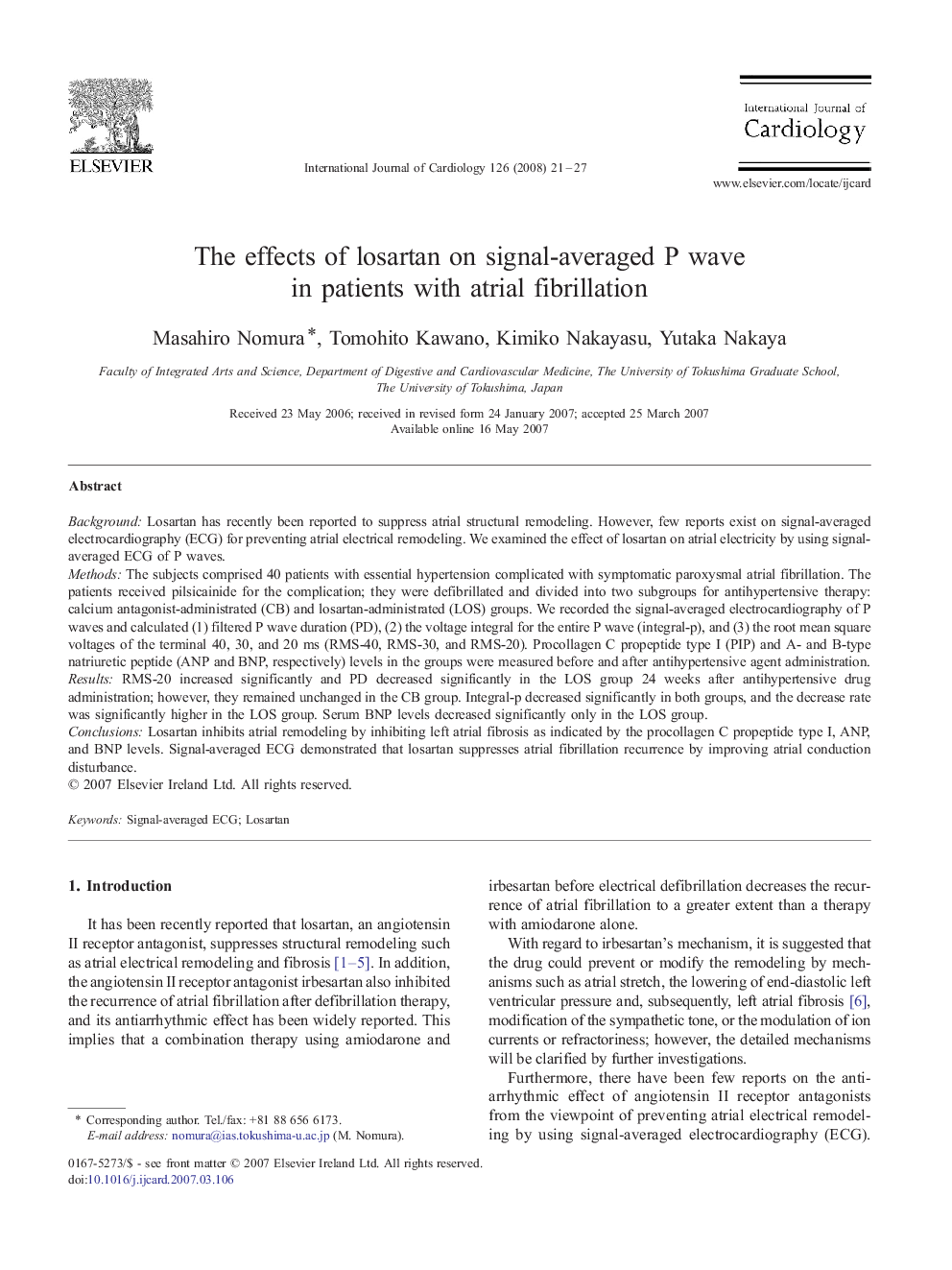| Article ID | Journal | Published Year | Pages | File Type |
|---|---|---|---|---|
| 2934345 | International Journal of Cardiology | 2008 | 7 Pages |
BackgroundLosartan has recently been reported to suppress atrial structural remodeling. However, few reports exist on signal-averaged electrocardiography (ECG) for preventing atrial electrical remodeling. We examined the effect of losartan on atrial electricity by using signal-averaged ECG of P waves.MethodsThe subjects comprised 40 patients with essential hypertension complicated with symptomatic paroxysmal atrial fibrillation. The patients received pilsicainide for the complication; they were defibrillated and divided into two subgroups for antihypertensive therapy: calcium antagonist-administrated (CB) and losartan-administrated (LOS) groups. We recorded the signal-averaged electrocardiography of P waves and calculated (1) filtered P wave duration (PD), (2) the voltage integral for the entire P wave (integral-p), and (3) the root mean square voltages of the terminal 40, 30, and 20 ms (RMS-40, RMS-30, and RMS-20). Procollagen C propeptide type I (PIP) and A- and B-type natriuretic peptide (ANP and BNP, respectively) levels in the groups were measured before and after antihypertensive agent administration.ResultsRMS-20 increased significantly and PD decreased significantly in the LOS group 24 weeks after antihypertensive drug administration; however, they remained unchanged in the CB group. Integral-p decreased significantly in both groups, and the decrease rate was significantly higher in the LOS group. Serum BNP levels decreased significantly only in the LOS group.ConclusionsLosartan inhibits atrial remodeling by inhibiting left atrial fibrosis as indicated by the procollagen C propeptide type I, ANP, and BNP levels. Signal-averaged ECG demonstrated that losartan suppresses atrial fibrillation recurrence by improving atrial conduction disturbance.
